Partial staff resume
The following is a partial resume of the MSU Cryogenic Initiative’s staff. It focuses on the staff’s involvement in large helium systems in the United States.
1995 and 2004, Thomas Jefferson National Accelerator Facility (JLab) Continuous Electron Beam Accelerator Facility (CEBAF) Central Helium Liquefier (CHL-1) 4.5 Kelvin Refrigerator [1]
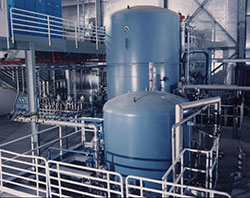
This development reduced the electric input power from 6.5 to 4.2 megawatts for (4 GeV operations) using the patented Floating Pressure Process, resulting in a savings of $92,000 per month in electric costs at $0.055 per kilowatt-hour. The Floating Pressure Process (Ganni Cycle) was developed at the Superconducting Supercollider Laboratory (SSCL) by Dr. Rao Ganni.
[1] C. Westfall, “Engineering the Big Chill: The Story of JLab’s Central Helium Liquefier,” Phys. Perspect. 16, 2015, p.37-68, DOI 10.1007/s00016-014-0127-7
________________________________________________________________________
2005, Spallation Neutron Source (SNS) 4.5 Kelvin Refrigerator [3]
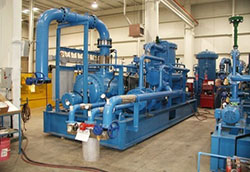
This development reduced the electric input power from 3.9 to 2.7 megawatts and in liquid nitrogen consumption from 210 to 160 gallons per hour using the patented Floating Pressure Process. It resulted in a savings of $46,000 per month in electric costs at $0.055 per kilowatt-hour and of $12,000 per month in liquid nitrogen at $0.25 per gallon.
[3] F. Casagrande, P. Gurd, D. Hatfield, M. Howell, H. Strong, D. Arenius, V. Ganni, P. Knudsen, J. Creel, “SNS 2.1K cold box turn-down studies” (PDF), in EPAC 2006 - Contributions to the Proceedings. European Physical Society Accelerator Group (EPS-AG), p. 514-516, 10th European Particle Accelerator Conference, EPAC 2006, Edinburgh, United Kingdom, 26-30 June 2006
________________________________________________________________________
2006, Brookhaven National Laboratory (BNL) Relativistic Heavy Ion Collider (RHIC) 4.5 Kelvin Refrigerator Before and After Phase III Upgrades [4]
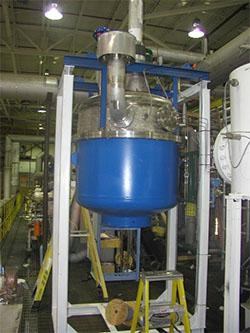
This development reduced the electric input power from 9.2 to 5.0 megawatts by implementing modifications and the Floating Pressure Process. It resulted in a savings of $215,000 per month at $0.070 per kilowatt-hour.
[4] https://www.bnl.gov/bnlweb/pubaf/bulletin/files/2008/20080208.pdf (PDF)
_______________________________
2013, NASA Johnson Space Center (JSC) 20 Kelvin Helium Refrigerator (for the James Webb space telescope testing) [5]
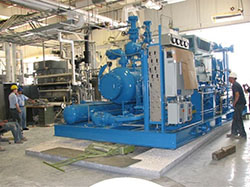
No shield refrigerator in existence to date has the load-capacity range, turn-down range, and load-temperature stability, all handled automatically. It is capable of automatically supporting a load range from 118 kilowatts at 100 Kelvin down to 11.2 kilowatts at 15 Kelvin.
It has an essentially constant efficiency from 100 percent down to approximately 30 percent of the maximum capacity, which is handled automatically and provides a temperature stability of less than ± (plus or minus) 0.1 Kelvin. It requires less than 66 watts of input power per watt of cooling at 20 Kelvin (i.e., the design load temperature) and at peak operation (20.4 kilowatts), and has an increase of less than 20 percent in input power (for the same load) at 31 percent of the peak load.
[5] https://ntrs.nasa.gov/api/citations/20130013844/downloads/20130013844.pdf (PDF)
________________________________________________________________________
2013, National Aeronautics and Space Administration (NASA) Liquid Nitrogen Shroud Thermo-Siphon System [6]
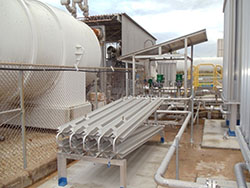 This development reduced the number of valves and devices by more than 80 percent as compared to the original contractor proposal. The original proposal required a 300-hour maintenance cycle (for pumps); the thermosiphon uses no pumps. In addition, the development resulted in:
This development reduced the number of valves and devices by more than 80 percent as compared to the original contractor proposal. The original proposal required a 300-hour maintenance cycle (for pumps); the thermosiphon uses no pumps. In addition, the development resulted in:
- A steady state consumption reduction from 48,000 gallons per day to 24,000 gallons per day,
- A cool-down consumption reduction from 58,000 gallons to 18,000 gallons, and requiring a less than a third of the time
- A shroud-operating temperature range reduction from 86-91 Kelvin to 79-82 Kelvin
[6] https://ntrs.nasa.gov/api/citations/20130013864/downloads/20130013864.pdf (PDF)
________________________________________________________________________
2015, 12 GeV Upgrade 4.5 Kelvin Refrigerator [7]
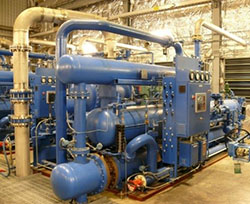
This development resulted in an essentially constant performance and with automatic control for a wide range of load types from 100 percent down to approximately 30 percent of the maximum capacity, requiring less than 230 Watts of input power per Watt of cooling at 4.5 Kelvin at the peak cold compressor load.
It also demonstrated the ability to handle a pulsed load in an efficient and stable manner (even though it is “not designed” for this type of load). It can automatically operate from a peak load at 19.5 bar discharge pressure down to 6.5 bar (discharge pressure) without throttling (imposed pressure reduction across a valve) or bypassing flow or adding a "dummy" heat load.
[7] P. Knudsen, V. Ganni, N. Hasan, K. Dixon, R. Norton, J. Creel, “Modifications to JLab 12 GeV refrigerator and wide range mix mode performance testing results,” Proc. 26th Int. Cryo. Eng. Conf., 7-11 March, 2016, New Delhi, India
________________________________________________________________________
FRIB 4.5 Kelvin Refrigerator [8]
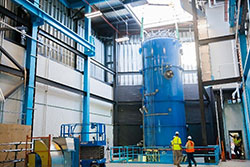
This project is expected to have the same performance as JLab’s 12 GeV (gigaelectronvolt) upgrade 4.5 Kelvin refrigerator (described above).
[8] V. Ganni, et al., “Application of JLab 12 GeV helium refrigeration system for the FRIB accelerator at MSU” (PDF), AIP Conf. Proc. 1573, 2014
